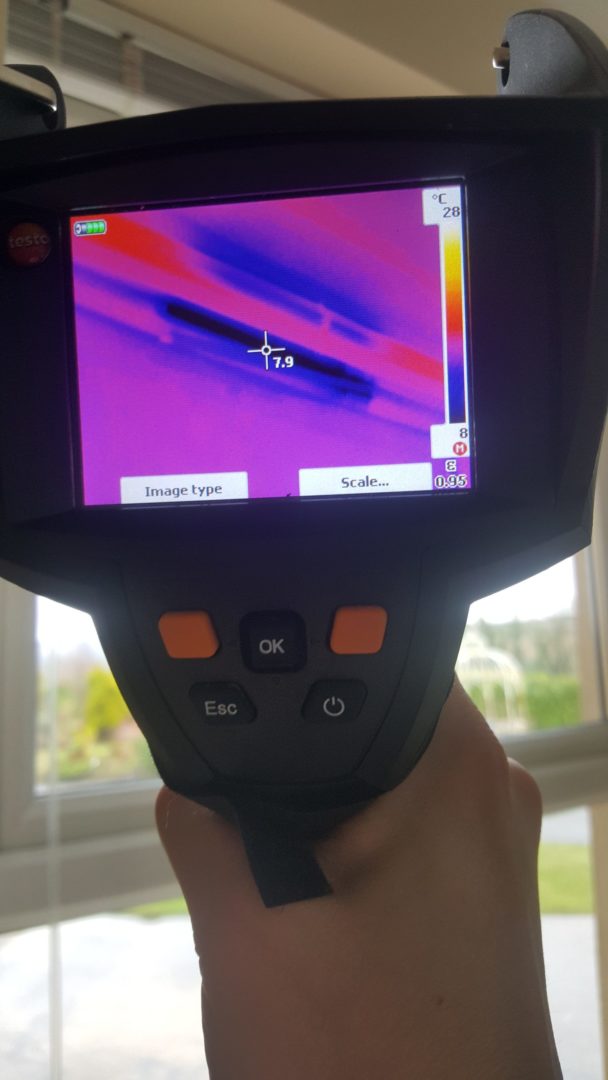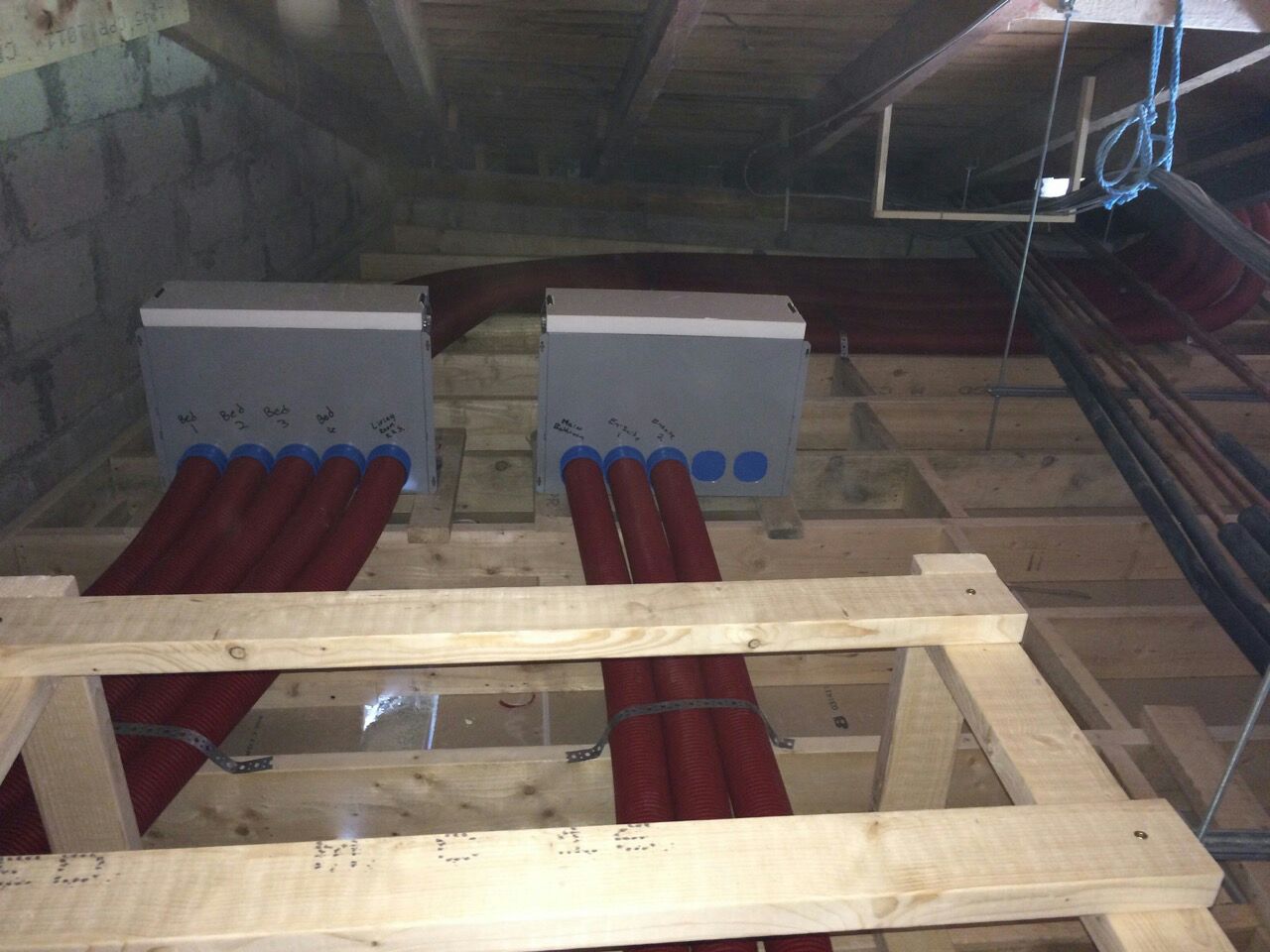Ventilation in My Home – Do I need it and what are my options?
July 6 2016
In the last 10 years we have seen a big improvement in the energy performance of modern houses, with insulation and air tightness now at the forefront of nearly all new build homes.
Increasing the levels of air tightness goes a long way in reducing heating bills, but we also need the property to be able to breathe in order for the occupants live in a healthy environment which is free from condensation and mould issues.
When it comes to ventilating a property there are a number of various options open to home owners.
Each system has its own star rating in terms of efficiency, and we have discussed these below, with 1 being the least efficient, and 5 being the most efficient.
1. Trickle Vents combined with Extract Fans
This consists of a sliding vent fitted in the top of your window which allows air in from outside, and the extract air from the wetroom escape through the extract fans. The disadvantage with this is that when you have a cold, windy night, the cold air enters the vents and cools the room which increases the running costs of your heating system. Extract fans when running tend to be very noisy and set on a timer. Even you enter the wetroom for a minute the fan usually stays on for 15 minute periods and draws a lot of heat out of the room during that time.
We have attached an image below of the cold air getting in through a trickle vent. We captured this picture when we were undertaking a thermal imaging survey in a property which had very high energy bills. To have air coming in at the outside ambient temperature, and having your heat source fighting against this to try to heat the room to 20 degrees seems mind boggling, yet people wonder why they have big heating bills?

Thermal Imaging Camera
2. Positive Input Ventilation System
This system is a good solution for older housing which may have mould/condensation issues. It consists of a unit in your attic space which draws air in from the attic and ventilates it through a grille in the landing ceiling.
It creates a “positive air flow” which makes its way out of the house through cracks/openings and extract fans. The main disadvantage with this system is that it can also cool the house down in the Winter, as it is drawing cold air in from the cold attic space.
3. Single Room Heat Recovery Ventilation Units with extract fans
This is a system which does not have any ducting, and consists of units mounted in the walls of habitable rooms at high level to change the air in the room. The fan changes direction roughly about every 60 seconds from taking air in from outside to then taking air out of the room.
The units have a ceramic stone or an equivalent heat exchanger to capture the heat going back out of the house so that the incoming air is pre heated as it comes in. It still requires extract fans in wetrooms as a means of removing moisture from these.
4. Demand Control Ventilation System
This system consists of a central extract unit which has intelligent CO2/H20 and VOC sensors to automatically adjust the volume extract room from each wetroom (via a ducted system and a grille in the ceiling of the room) in order to remove smells and moisture in a fast and efficient way. Intake air is in the form of wall mounted humidity inlet grilles, which will open to let more air in when the DCV unit is in boost mode.
When operating normally it will run on trickle mode to keep air moving throughout the house. The advantage of this system is that it is quiet and only boosts when required. Unlike the MHRV System it does not have a heat recovery element and it does not require filters to be changed on a regular basis. It is a good alternative when a full MHRV system is not possible due to duct runs in a house or when a client’s budget is tight.
Here you can view the the brochure for the Renson Healthbox DCV system that we offer. This is a different ventilation concept to MHRV. Here is a short video to show how it works.
5. Mechanical Heat Recovery Ventilation (MHRV) System
A Heat Recovery Ventilation system works by extracting warm, moist air from bathrooms, shower rooms and kitchens via a system of ducting which passes through the heat exchanger (usually in the loft space) before being expelled outside. Fresh incoming air is preheated via the heat exchanger and ducted inside into the habitable rooms in the house such as Bedrooms, Living Rooms etc. The heat recovery unit recovers approximately 85-90% of the heat that would otherwise be lost through extract fans in the property. It has a supply and exhaust filter in the heat recovery unit which need to be changed on an annual basis. Below you can view some images below of the Hybalans Ducting System installed in new houses we have been working in.
6. MHRV System Description
At Daly we design and install the Hybalans Ducting System which provides the supply, as well as the discharge of ventilating air with the highest possible energy saving and maximum convenience. It consists of 2 No. Manifolds – 1 x Supply & 1 x Extract and the ducting is 92mm Semi Rigid Plastic which runs to each individual room. The main advantage of this system is that it is very easy to balance, especially compared to a traditional teed off system which can be very hard to get the air flows correct on. The air quantities per air valve are simply centrally adjusted in the air distribution boxes. Adjustment of the air valves is unnecessary.
Due to low resistance losses, the working point and fan motor rpm of the HRV unit are reduced. This creates an extra reduction of the system noise.
For further information on the Hybalans Ducting System, please have a look at the following video.
We prefer to have the MHRV unit and Manifolds in a heated space where possible as this increases the overall efficiency of the System.
The choice of MHRV unit will be carefully selected by Daly to ensure that the
operating capacity of the System is in or around 50% where possible.
Summary
When it comes to building a new home, it is understandable that everyone is on a budget. What is worth keeping in mind however is that when the house is built, items like ventilation systems can be very hard to retrofit and it is worth giving the ventilation system some serious consideration, especially if you can see the long term gains in terms of the comfort and health of the buildings occupants, but also the financial aspect of keeping energy costs low.


